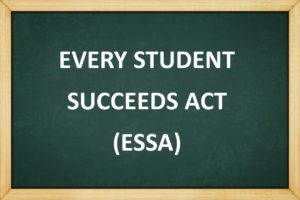Ask state and local school districts/superintendents to consider the magnet school approach as an option for promoting student academic achievement in the lowest performing schools as part of a comprehensive Title I school improvement strategy. The U.S. Department of Education has already concluded that federal funds under the School Improvement Grants program can be used to promote diversity.
Here’s why:
Magnet schools have a proven track record for turning around struggling schools. A number of studies have shown that students at magnet schools perform better than their peers at traditional schools. The research speaks for itself. Jacksonville, FL and Houston, TX are strong examples of how magnet schools were central to their desegregation plan and how academic achievement increased:
As part of Duval County’s desegregation plan, magnet schools were established at approximately half of the district’s 150 schools. The researchers found that magnet school students’ Stanford Achievement Test scores exceeded those of non-magnet school students at the elementary, middle, and high school levels. In addition, the test scores received by low-income magnet students exceeded those of the district’s low-income non-magnet students.
A study conducted by Houston Independent School District’s Department of Research and Accountability (2007) analyzed the performance of students enrolled in three different types of magnet programs at 105 of the district’s schools: school-within-a-school magnet programs, separate magnet schools, and add-on magnet programs. Results from the Texas Assessment of Knowledge and Skills and the Stanford Achievement Test indicated that students in all three types of magnet programs in all grades had higher passing rates on the reading, mathematics, writing, and science subtests of the assessments than did their respective grade-level counterparts districtwide.
Here’s how:
 As part of the transition to ESSA, states must submit a detailed plan to the U.S. Department of Education explaining how it will implement the new law. ESSA further requires that states conduct “extensive outreach and community engagement” with education stakeholders and the general public during the development process of these state plans. This provides an opportunity for individuals and groups to play an integral role in developing state education policy.
As part of the transition to ESSA, states must submit a detailed plan to the U.S. Department of Education explaining how it will implement the new law. ESSA further requires that states conduct “extensive outreach and community engagement” with education stakeholders and the general public during the development process of these state plans. This provides an opportunity for individuals and groups to play an integral role in developing state education policy.
- You can do this by participating in stakeholder meetings and listening sessions and weighing in on the draft Title I plan.
- You can share Magnet Schools of America Standards of Excellence as a possible roadmap for a comprehensive improvement strategy.
- Encourage school districts to apply for MSAP federal funding and inform them that transportation costs are an allowable use of funds.
- You can work with your state education officials to understand their goals for K-12 improvement and leverage various funding streams available through ESSA to help them provide a well-rounded education to their students. Here is a letter from the U.S. Department of Education providing related guidance.
 This toolkit was created to help magnet schools and their partners across the United States to engage with state and local decision makers around the implementation of the Every Student Succeeds Act (ESSA). States are required to engage with stakeholders as they write their new state plans. While Magnet Schools of America (MSA) prioritizes certain sections of the law (and therefore provides relevant resources), MSA encourages schools to be involved as much as possible in the work happening in their states around the new law. This is a historic moment for K-12 education, with more control being given to the local education agencies. The more magnet schools engage, the more our voice will be heard and hopefully our priorities addressed.
This toolkit was created to help magnet schools and their partners across the United States to engage with state and local decision makers around the implementation of the Every Student Succeeds Act (ESSA). States are required to engage with stakeholders as they write their new state plans. While Magnet Schools of America (MSA) prioritizes certain sections of the law (and therefore provides relevant resources), MSA encourages schools to be involved as much as possible in the work happening in their states around the new law. This is a historic moment for K-12 education, with more control being given to the local education agencies. The more magnet schools engage, the more our voice will be heard and hopefully our priorities addressed. 




